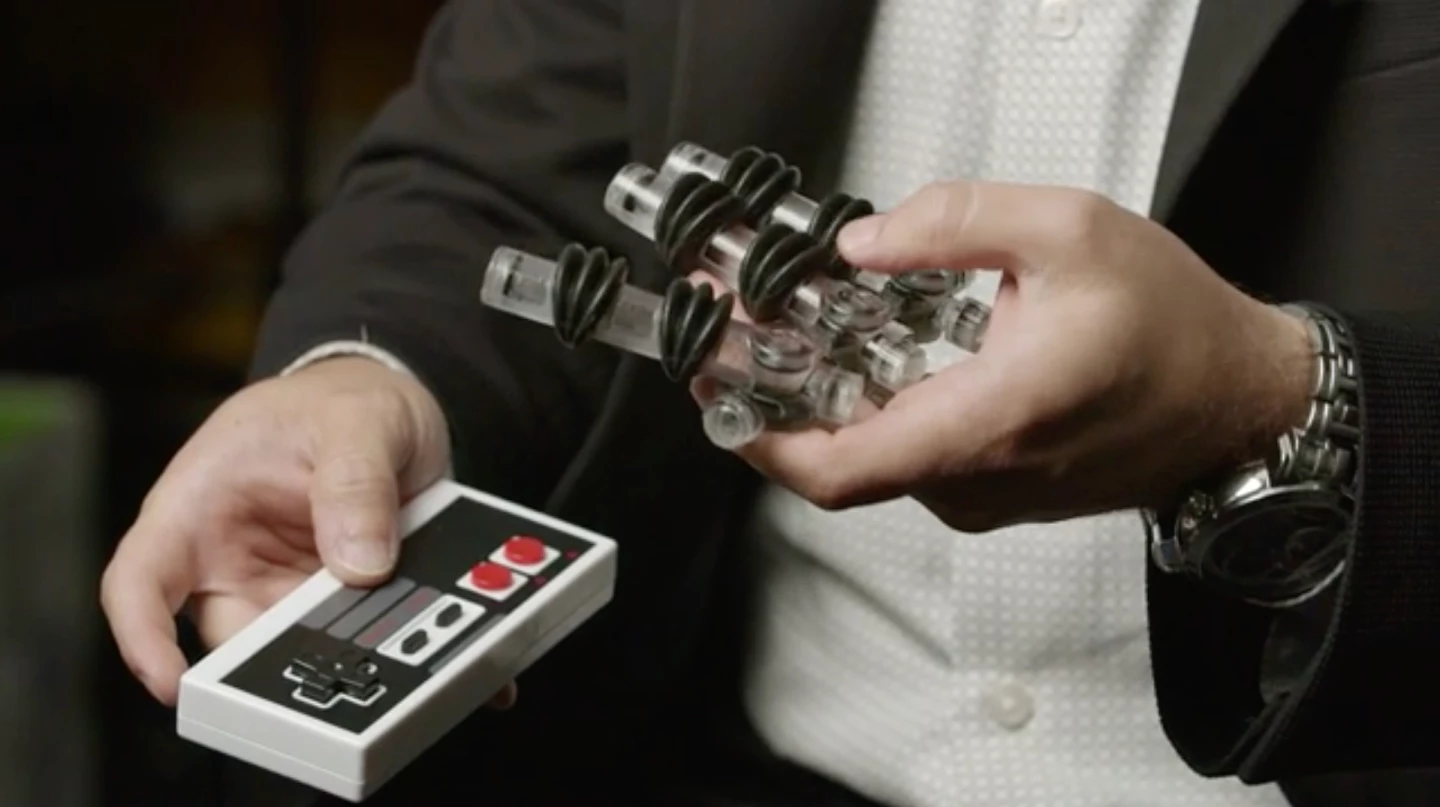Robotic hands do show a lot of promise for various applications, but their mechanical complexity still limits their possible uses. A new air-powered hand is much simpler, but still dextrous enough to be utilized to play a video game.
In a conventional electronic robotic hand, a separate control line typically has to be routed to each finger. This requires them to be bulkier, more energy-hungry and overall fiddlier than they would be otherwise, plus it makes them costlier to manufacture.
Led by Asst. Prof. Ryan D. Sochol, researchers at the University of Maryland set out to develop a far less complex but still capable alternative. The result is a 3D-printed, three-fingered soft robotic hand, that can independently move each of its fingers in response to changes in air pressure.
A separate compressor pumps air into the hand via just a single rubber hose. At the finger-end of that hose are three non-electric devices known as "fluidic transistors." Each of these transistors is designed to open and let air flow into its respective finger, in response to a different air pressure – low, medium or high.
When the air flows in, the finger contracts and points downward. Therefore, by varying the pressure of the air that's pumped into the hand, it's possible to selectively activate any one of the fingers. Ceasing the air flow altogether causes all three fingers to raise to a neutral position.

In a demonstration of their creation, Sochol and his team used the hand to press the buttons on an original-system Nintendo controller, with which they successfully completed the first level of the Super Mario Bros video game. What's more, they were able to complete it within less than 90 seconds.
The scientists are now hoping to adapt the technology for use in applications such as customizable prosthetics, surgical tools and rehabilitative devices ... and they're making it easy for other groups to do likewise.
"We are freely sharing all of our design files so that anyone can readily download, modify on demand, and 3D print – whether with their own printer or through a printing service like us – all of the soft robots and fluidic circuit elements from our work," says Sochol. "It is our hope that this open-source 3D printing strategy will broaden accessibility, dissemination, reproducibility, and adoption of soft robots with integrated fluidic circuits and, in turn, accelerate advancement in the field."
The research is described in a paper that was recently published in the journal Science Advances.
Source: University of Maryland





